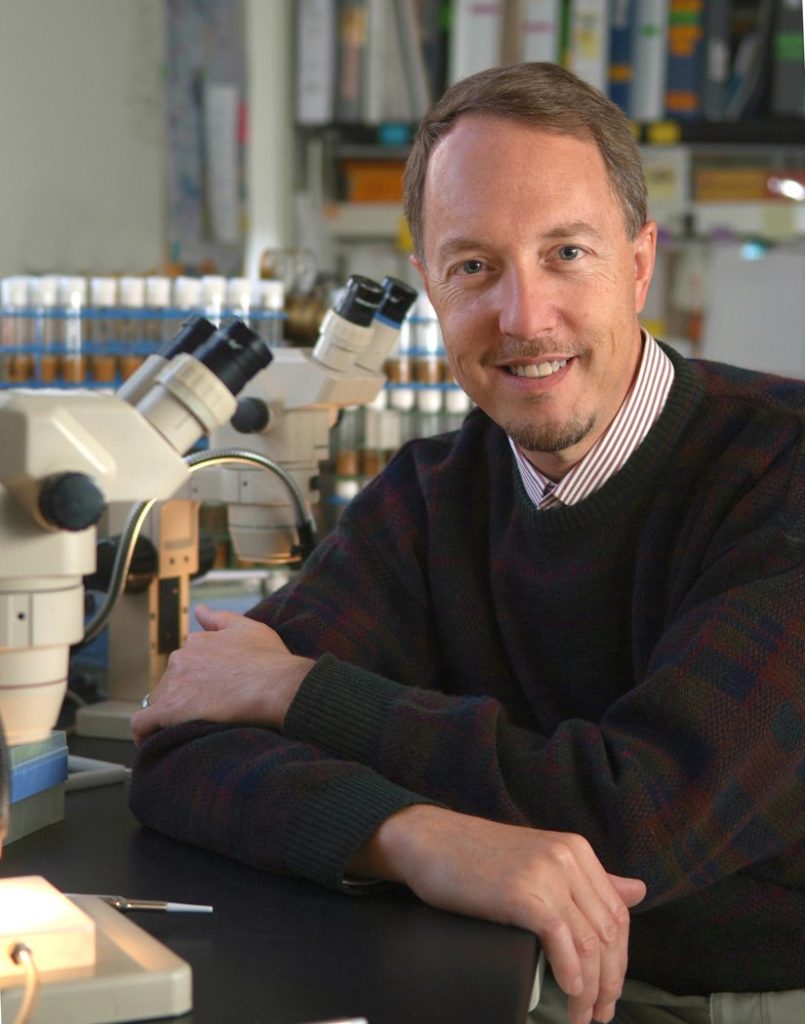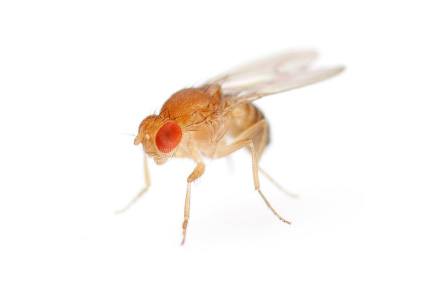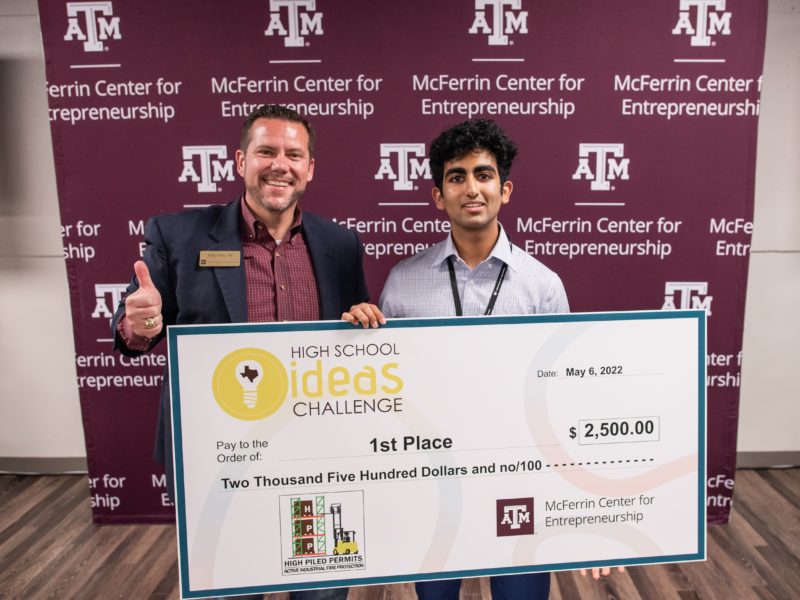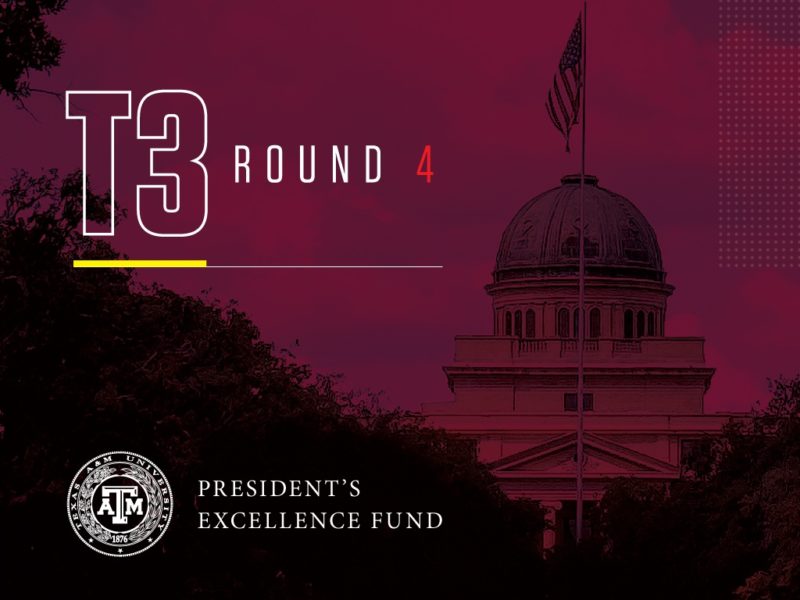As the second day of a new month dawned, three American scientists found their lives transformed by a single telephone call, the one every scientist dreams of receiving.
At 5:30 a.m. EDT on Monday, Oct. 2, Jeffrey C. Hall and Michael Rosbash (Brandeis University) and Michael W. Young (Rockefeller University) were unveiled as co-recipients of the first of the 2017 Nobel Prizes — in their case, the Nobel Prize for Physiology or Medicine “for their discoveries of molecular mechanisms controlling the circadian rhythm.”
For Texas A&M University biologist Paul E. Hardin, first author as a postdoctoral fellow at Brandeis on one of the seminal papers cited by the Nobel Committee in awarding the prize, the first call came in just after 7 a.m. CDT, along with the emails — a slow trickle at first, then a steady stream as the worldwide news continued to spread. One of those calls was from Rosbash, Hardin’s postdoctoral adviser at Brandeis, who Hardin describes as “still on cloud 9.”
To date, Hardin has spoken with many media outlets, including The Scientist, The New Yorker, Inside Science and Quanta magazine, based on his close connection to science’s premier international prize. Horseshoes and hand grenades aside, Hardin is nothing but positively upbeat and genuinely pleased for both his colleagues and his profession.
“A Nobel Prize for circadian clocks is great for the field,” said Hardin, inaugural holder of the John W. “Bill” Lyons Jr. ’59 Endowed Chair in Biology and director of the Texas A&M Center for Biological Clocks Research since 2006. “It is indeed exciting to have worked with two of the three winners and to see them and my field honored with such a momentous award. It is a proud moment for circadian clocks.”
Brandeis’ “pit” — a dingy basement-level room within a now-nonexistent biology building harboring an incubator and an eventual Nobel Prize-worthy discovery — is where Hardin cut his teeth in fruit fly (Drosophila melanogaster) research. Because fruit flies undergo many of the same physiological processes as larger creatures, including humans, they serve as model organisms, allowing researchers such as Hardin to observe details that can’t be seen in more complex animals.
Hardin’s research during the past two decades has helped to establish Drosophila as a premier model organism for studying the circadian clock. As a key member of Rosbash’s laboratory from 1987 to 1991, he discovered the first circadian feedback loop in gene expression in the brain of the fruit fly — a breakthrough that established the mechanistic framework for circadian timekeeping, not only in Drosophila, but also ultimately in higher organisms, including humans.
Many subsequent discoveries have profoundly affected our understanding of the role the human clock plays in health and disease, none more so than the 1990 paper he co-wrote with Rosbash and Hall that formed the basis for a large body of research into the molecular nature of circadian timekeeping in both Drosophila and mammals.
In the early years of his independent career, Hardin’s research group also identified the so-called “e-box” regulatory element that drives rhythmic transcription required for both circadian timekeeping and controlling rhythmic processes, discovered multiple feedback loops of gene expression controlling rhythmic transcription at other times during a daily cycle, and characterized a well-defined physiological output of this rhythmic gene expression in the form of rhythmic olfactory function. More recently in 2010, Hardin’s research showed the clock that influences Drosophila’s sense of taste in cells on the insect’s tongue, or proboscis, likewise influences its eating habits, providing valuable insight into obesity and other eating disorders.
By pinpointing genes that control additional circadian clock function in fruit flies, Hardin continues to shed light on how the human clock operates and also possibly reveal novel targets for the development of drugs to treat disorders caused by clock dysfunction, such as metabolic syndrome, jetlag, advanced and delayed sleep-phase syndromes, and even cancer.
“It is simply remarkable how many times discoveries made by Dr. Hardin have served as proofs-of-principle that have sparked follow-up work in many other organisms in many other laboratories,” said Thomas D. McKnight, professor and head of the Texas A&M Department of Biology. “His seminal discoveries clearly laid the foundation for the explosion of circadian biology from laboratory curiosity to biomedical mainstream. This often cited ‘clock-work explosion’ of the last 25 years would not have been possible without Paul, and no individual has had a larger impact on the field of biological rhythms.”
In recognition of his contributions to the field of rhythms research, Hardin received the 2003 Aschoff-Honma Prize from the Honma Life Science Foundation in Japan. He served as president of the world’s premier society for the research of circadian biology, the Society for Research on Biological Rhythms, and is a member of the American Association for the Advancement of Science, the Genetics Society of American, and the Society for Neuroscience. Hardin has authored more than 100 publications and been cited more than 6,500 times.
Hardin earned a doctorate in genetics from Indiana University (1987) and a bachelor of science in biology from Southern Methodist University (1982). Prior to returning to the Texas A&M Biology faculty in 2006, he previously held faculty positions at the University of Houston (1995-2005) and Texas A&M (1991-1995). Hardin was appointed as a distinguished professor — Texas A&M’s highest honorific faculty rank — in 2008 and was recognized with a 2017 Texas A&M Association of Former Students Distinguished Achievement Award in Research.
“In many ways, the history of Paul’s work is the history of where the field has gone,” said Dr. Jay C. Dunlap, Nathan Smith Chair in the Geisel School of Medicine at Dartmouth University and chairman of the Department of Genetics, which he founded in 1999. “The successful prosecution of this effort has propelled Hardin into the top ranks of chronobiologists in the world today.”
Another Texas A&M biologist, assistant professor Jerome Menet, also served as a postdoctoral researcher within the Rosbash group at Brandeis. Hardin says Menet’s time as a postdoc there marked a critical time for understanding the extent of gene regulation by the clock and how these genes are regulated.
“Importantly, Jerome represents the only postdoc who studied clock gene regulation in mammals in the Rosbash lab — impressive studies that he has continued here at Texas A&M,” Hardin added.
Click here to see the official Nobel Prize announcement and scientific background, including the history that mentions Hardin beginning on Page 3:
To learn more about Hardin’s research at Texas A&M, visit http://www.bio.tamu.edu/index.php/faculty/hardin/lab/.
###
This story by Shana K. Hutchins originally appeared on the College of Science website.







